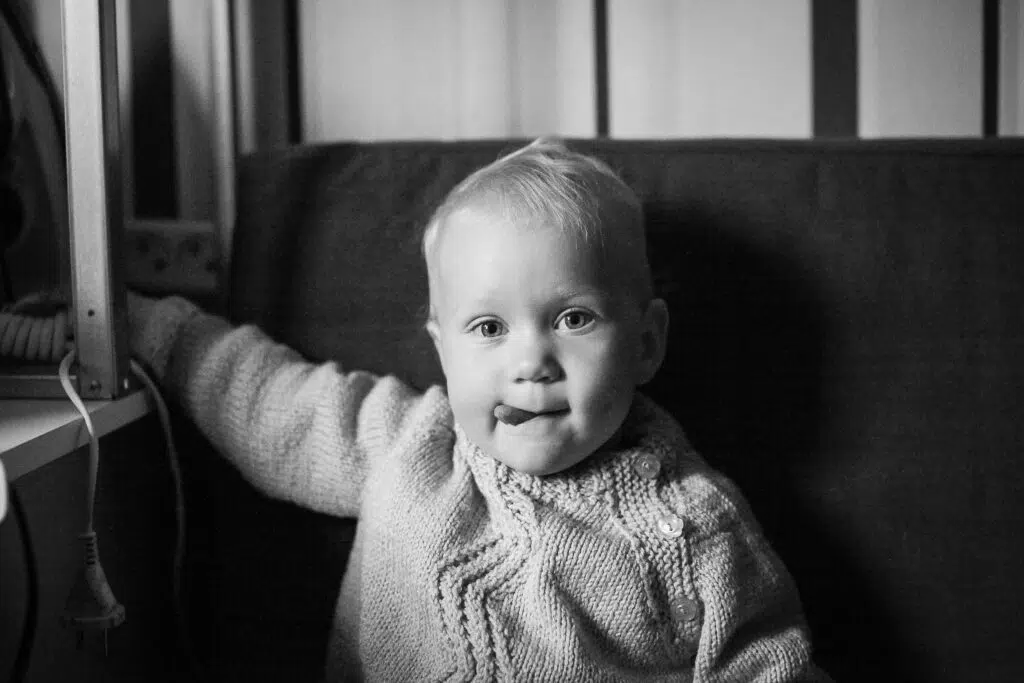Starting solid foods is a major milestone in your baby’s development, but how can you tell when your baby is ready? There are a number of things your doctor suggests to look for before you start introducing different foods to your baby. These six signs will guide you toward a smooth and safe transition.
1. Sitting Up with Minimal Support

Your baby needs proper head and neck control to swallow solids safely. Take note of how well your child can sit up. If they can sit up unassisted or for a few minutes with minimal support, they may be ready to start solid foods. Remember that adequate head and neck control is essential for safe swallowing, preventing choking, and self-feeding. If you answer no to any of these questions, starting solids should be put on hold.
2. Showing Interest in Your Meals

Have you noticed that your baby is drooling over your plate at mealtime? Take notice of how they react at meal times. Their reaction can be a sign that they’re ready to start trying some foods, especially if they are reaching for foods or watching you intently.
3. Losing the Tongue-Thrust Reflex

The tongue-thrust reflex is an infant’s natural response to push their tongue forward when touched. This reflex is vital for breastfeeding but should disappear around 4-6 months of age. The disappearance of this reflex indicates a baby’s readiness for solid foods. Introducing solids before the reflex disappears can lead to gagging, choking, feeding difficulties, and delayed oral motor skills development. It’s crucial to wait for the reflex to fade and offer age-appropriate textures when introducing solids. Remember, every baby develops at their own pace, so consult a pediatrician if you have any concerns.
4. Increased Appetite Despite Frequent Feedings

Is your baby constantly hungry and in search of food? If milk or formula no longer satisfies your baby, they might need additional nutrients. You can find additional nutrients in solids like fruits and vegetables as well as protein. Having access to nutrient-dense foods is sure to satisfy their cravings and satiate them when milk alone doesn’t do the trick.
5. Picking Up and Bringing Objects to Their Mouth

Babies put objects in their mouths as a way to explore their world, develop motor skills, and self-soothe. However, this development can also be an indicator they’re ready to explore textures and tastes. Being able to pick up foods and bring them to their mouth is a key part of being able to feed themselves.
6. Reaching 6 Months of Age

You do not need to give your baby rice cereal or other foods before six months unless they are showing other signs of being ready. Not only do they provide little nutrients they can also be a choking hazard. Instead, wait until 6 months. Most pediatricians recommend starting solids around this age to align with their development.
Recognizing When Your Child is Ready

Recognizing these signs in your baby can help you determine if they are ready for this exciting new step. It’s always a good idea to consult your pediatrician before introducing solid foods to keep your little one happy and healthy. Most babies are ready around 6 months old, but individual development should be considered. Consulting a pediatrician can guide introducing solids safely. Just always remember that every baby develops at their own pace. Patience and education is key for knowing when they’re ready to move on to solids.